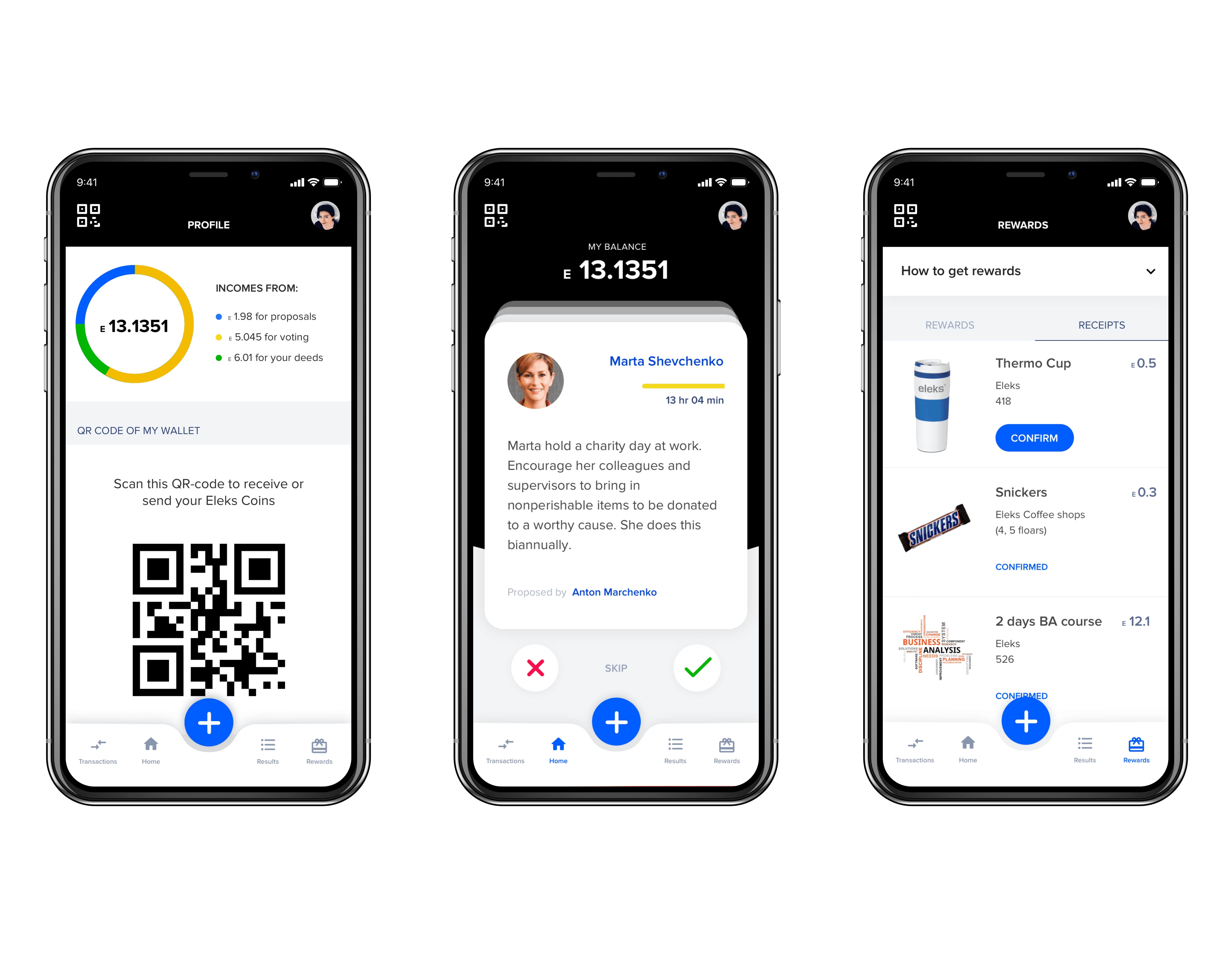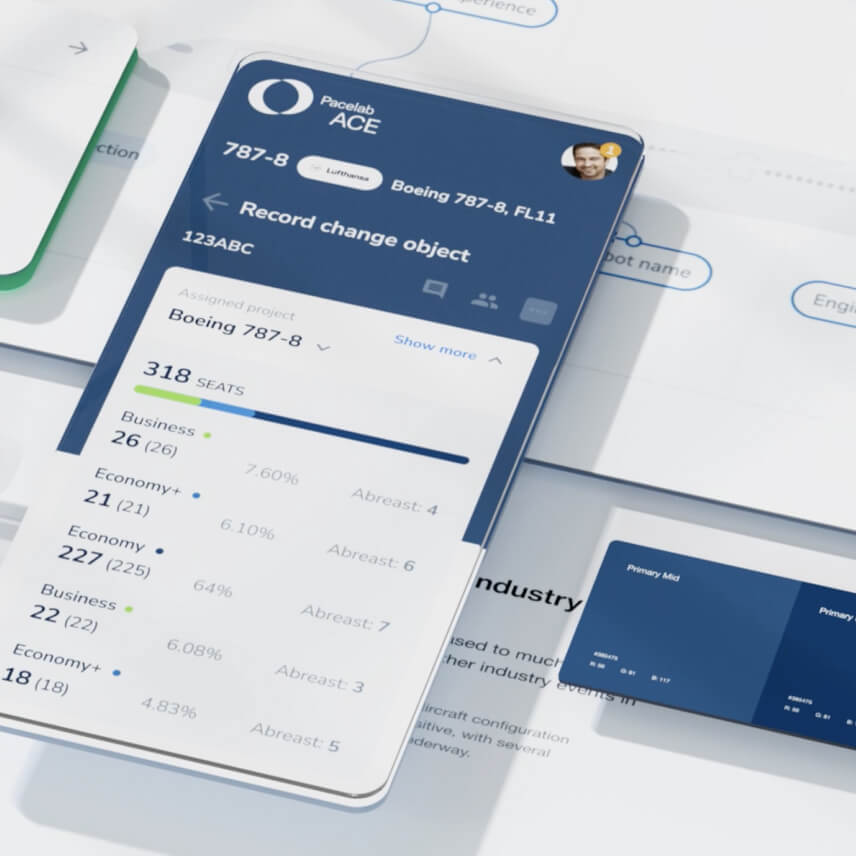“Business leaders need to be thinking about and they should be worried about and they should be getting excited about the fact that the internet is entering a second era, and they need to transform their businesses around that”, says Don Tapscott, the Founder of Blockchain Research Institute.
Committed advocates of blockchain technology, some of whom joined the game back in 2008, don’t find distributed ledgers extraordinary or mysterious. They completely understand decentralisation’s potential and know how it can be put to work for businesses.
However, there are still many who have only heard the buzzwords like distributed ledger, tokens and smart contracts, and have a very vague understanding of blockchain as a practical solution. Naturally, they can’t trust a technology that they don’t understand. As blockchain aficionados are in the minority, businesses should be cautious when introducing blockchain into their clients' everyday experience.
“A successful blockchain application returns a validated chaincode. A successful UX in a blockchain application makes it seamless for someone to start using the application, regardless of the technology behind it.” — Vanessa Colina.
Designing for trust
To make the most out of decentralisation and blockchain software, the UX design for blockchain should focus on the spheres where this technology can create the biggest value, such as applying blockchain for highly regulated industries to facilitate purchasing flow, provide secure blockchain-based data storage, or improve transparency and security of legal contracts. That is what we highlight to our clients: new technology itself won’t help you attract more customers unless you offer them a new level of efficiency or experience they can’t find elsewhere.
The basic principles of UX design for blockchain focus on the concept of ‘designing for trust’. This concept makes sense as the technology is still new to many industries and there aren’t many examples of its practical adoption by businesses. IBM’s article offers a simple yet extensive overview of the design principles for blockchain.
As there is plenty of information available on blockchain’s theoretical approaches and general design principles, we decided to focus on some practical stuff instead. In this article, we’ll share our experience of creating a user experience for our internal blockchain-based employee loyalty rewards app.
User testing, prototyping and MVP
We recently decided to run a blockchain-based project to support our internal employee rewards programme. The project included desktop and mobile applications, where employees earn tokens for their social and charitable activities. The app works as a blockchain-based rewards system and allows employees to vote for their colleagues.
As we already had an internal employee recognition programme that rewarded outstanding performance at work, we decided to make this one socially oriented, to help us improve communication and promote social consciousness among ELEKS staff. We also aimed to boost our staff’s interest in blockchain. It was crucial to create a simple and intuitive interface as its users would all have different technical backgrounds.
We conducted a few surveys which helped us to understand what kind of rewards our staff expected, so as not to disappoint them with unnecessary rewards. In addition to coffee and sweet treats, there were some interesting suggestions like having lunch with the CEO or earning some extra days off.
As the audience was very diverse, we decided to use the JTBD approach for this project, so the job story looked like: "When someone has helped me, and I want it to get recognised by others so that it can be rewarded".
Based on our survey results, we created a job map (see below) and made a number of useful findings:
- We need to create an easy way to add a story.
- People would like to have an opportunity to share their own opinions on the stories of others.
- Both sides need to be rewarded, as this is a kind of cyclic activity.
We took map outcomes and created our first prototype and conducted usability testing. As expected, these sessions helped us spot unclear moments in the user flow. After the prototype had been adjusted according to these insights it was ready for MVP development, followed by continuous improvement to cover user needs and requirements.
The best practices for building a blockchain-based UX
While creating an interface that is suitable for a diverse audience, we followed the blockchain design best practice, and this allowed us to reach our goal: populate the technology among ELEKS’ employees and promote social consciousness inside the company.
- Ensure consistency. Especially when developing a new experience, we need to ensure consistency to make users feel comfortable when interacting with our product.
- Add gamification. Gamification won’t fit into a serious enterprise blockchain-based financial application using cryptocurrencies or smart contracts, but for our needs, it suited perfectly.
- Mind the irreversibility. There is no way you can revert or cancel a transaction when using blockchain, and so it is essential to make sure your users are aware of blockchain irreversibility.
- Guide your users. The balance between assisting your users and making them feel stupid may be more fragile than you think; however, gentle guidance can help users reach their goals from the outset and prevent them from making mistakes down the line.
- Encourage feedback. When you offer a new experience, you will most likely lack approved patterns of users’ behaviour, so create a place for users’ propositions or complaints.
Several critical blockchain features and how you can use them
The app we’ve described above was developed for non-commercial use; however, developing commercial products with blockchain, using smart contracts or crypto-wallets, is a whole different story. Here are the key blockchain features you need to consider to create a positive experience with your product:
Security
From the very first interaction with your product, your users need to be assured that blockchain will keep their data protected. You will need to keep this in mind when designing your product, as very often the data that users provide to decentralised apps is sensitive, such as legal documents or other personal information. An average user probably won’t be able to verify that information is stored in blockchain and therefore is secured. You can make your users feel safer by using messages that confirm their security during important steps.
Speed
The average blockchain transaction takes much longer than it does on a centralised network: one-second transactions can become one-minute transactions. As your audience won’t be used to this, they’ll need to be kept in the loop at each step, showing them the transaction’s progress and providing constant feedback on its status.
Hashes
Personal blockchain keys or the document hashes are very long. Sometimes we need to shorten them, but more often than not users operate with the whole number. Give them an opportunity (and don’t forget to tell them about it) to copy the whole hash in the easiest way possible.
Personal keys
People are used to having the option of recovering their passwords when lost or forgotten. The time taken to reset a forgotten password can vary, but it’s always possible. Blockchain disrupts this UX pattern completely. It’s vital that you make sure that your on-boarding process informs people about blockchain’s distinct constraint. Your users need to know that losing a personal key is a serious issue.
Let’s sum things up
Decentralisation introduces many opportunities, but also increases a user’s responsibility, especially in terms of irreversibility or losing a personal key. Having said that, we expect users to get to grips with the advantages and security of blockchain in the long-term.
Despite all the new features, limitations and constraints, blockchain user experience is still a user experience, so there is no need to reinvent the wheel. The majority of well-known design principles and patterns are still relevant and applicable.
“While you craft a user experience for blockchain, the design is not the only thing that matters,” says Mariya Hrabovska, User Experience Designer at ELEKS. “Outstanding results are possible only in close cooperation within a cross-functional team. Designers shouldn’t be afraid to tap into chain code, peers or a distributed ledger.”
The more you get engaged in the development process from the very start, the easier it is for you to deal with a new technology’s constraints and the better experience you can offer to your end users as a result.
Are you looking for a way to implement blockchain as a practical solution for your users? Start smoothly with our whitepaper covering the risks and rewards of blockchain adoption.
If you are struggling with the challenges of blockchain-based user experience, the ELEKS Product Design team will be happy to give you a hand. Get in touch!
Related Insights



















